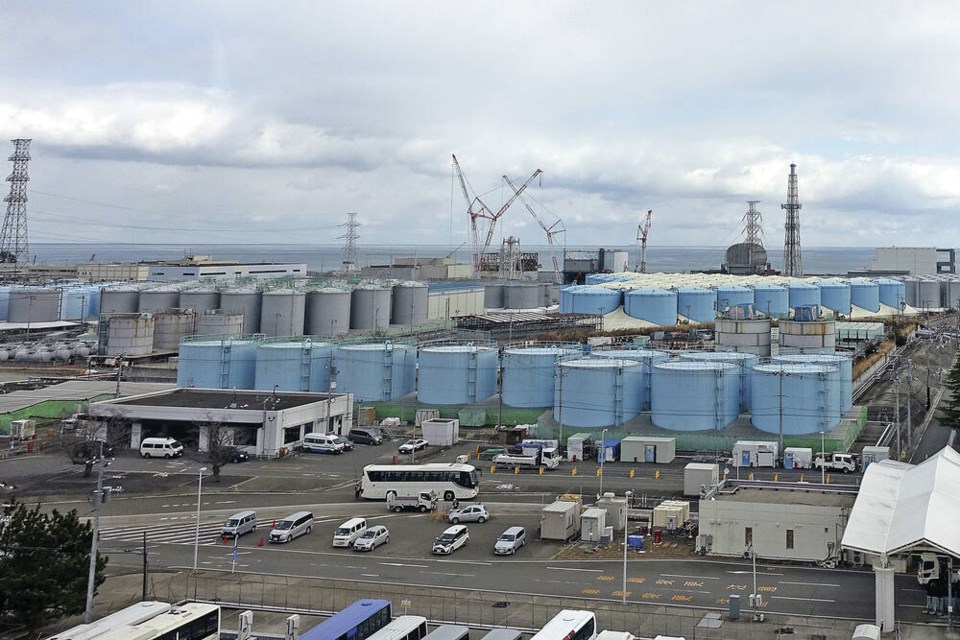The release of treated and diluted radioactive wastewater in Japan is unlikely to lead to problems in B.C. waters, a University of Victoria professor says.
Japanese officials announced a plan Tuesday to release radioactive water from the damaged Fukushima nuclear power plant into the Pacific Ocean starting as early as Thursday.
A massive earthquake and tsunami in 2011 destroyed the Fukushima Daiichi plant’s cooling systems, causing three of its reactors to melt and contaminate their cooling water. The water was collected, filtered and stored in about 1,000 tanks, which fill much of the plant’s grounds and will reach their capacity in early 2024. The Japanese government and plant operator, Tokyo Electric Power Company Holdings, say release of the water is an essential and unavoidable step toward decommissioning the plant and to prevent accidental leaks.
Jay Cullen, professor and director in the school of earth and ocean sciences at UVic, said the controlled dumping of wastewater should not be compared with the unexpected release of wastewater following the 2011 disaster, which caused increased radiation levels in food, water and the ocean near the plant.
The incident led to concerns that B.C. waters could experience higher radiation levels as well, but a project led by Cullen to measure the risk showed that radiation didn’t approach thresholds known to cause harm to marine life, ecosystem health or to people through the consumption of seafood or swimming in the ocean. “Given what we know about what’s in the tanks, there isn’t a significant risk to the health of the marine ecosystem or human health,” Cullen said of the current plan.
The concentration of radiation in the tanks does not appear to approach levels seen in 2011, he said. However, many in the scientific community are calling for more transparency, urging the government to share the radiation concentration in every tank. Only a sample of tanks has been shared publicly and there’s a lot of variation in the radiation levels, Cullen said.
“Without all of that information and the timescale of release — details that haven’t been made public — it’s difficult to carry out a full risk assessment,” he said.
The plan has been approved by the International Atomic Energy Agency, and preparations have been made to monitor for contamination. The scientific community in Canada and internationally is planning to examine the impacts as planned releases take place, he said.
Cullen noted that there is risk associated with keeping the wastewater in the tanks. In another disaster, the water could be released in an uncontrolled way.
Erica Frank, a professor in the University of British Columbia’s school of medicine, said the global alarm raised by the plan to release wastewater is justified. Trust in public health has been eroded following the mishandling of the Fukushima disaster, said Frank, a board member of the International Physicians for the Prevention of Nuclear War-Canada.
“We need the Japanese government to commit publicly and effectively to an objective, trustworthy, long-term solution, and to recognize here again that unearthing nuclear power is an unnecessary peril every place we do it,” she said.
The B.C. Seafood Alliance is watching the plan with concern, said its executive director, Christina Burridge. The non-profit, which represents thousands of small- and medium-sized businesses in B.C.’s seafood industry, didn’t see adverse health impacts to fish in the months after the 2011 tsunami.
“We are confident that between the [Canadian Food Inspection Agency] and the U.S. authorities we will quickly detect any threat to Canadian seafood,” Burridge said in an email.

